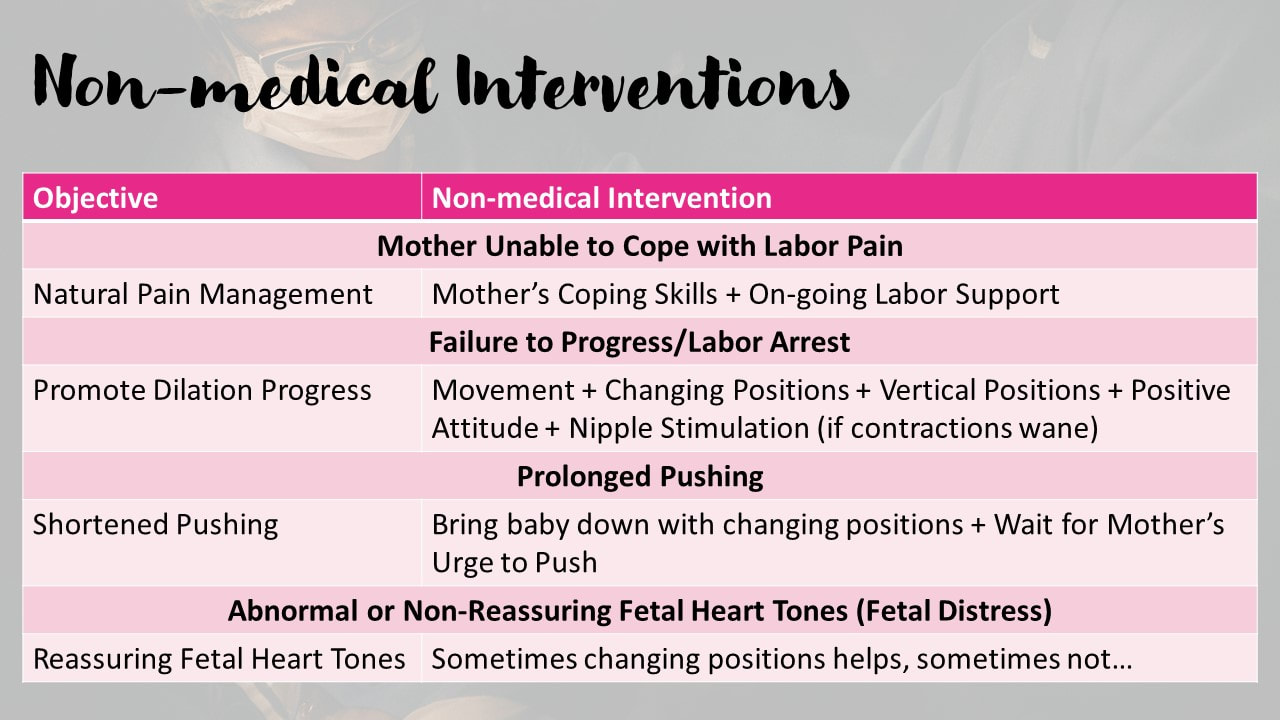Do you worry about any of these scenarios happening at your birth?
Amidst the excitement of welcoming your baby, I know there are worries that creep up and unsettle you about the unknowns of birth.
|
Maybe you are worried about…
|
You are not alone. Actually, these are the most common fears that mothers have when approaching birth, whether they are first-time moms or veterans. And they don’t even include the worries that your partner may be having in the face of supporting you through birth and beyond.
Our fears and anxieties can affect our birthing experience.
The sad reality is research confirms that fears related to birth can actually complicate the birthing process. Look at these findings by researchers.
Women who have “distress-related” thoughts and experience higher pain in early labor (due to lack of coping skills) have longer labors, more instrument deliveries, and increased abnormal fetal heart patterns compared to women with “coping-related” thoughts.
Lowe, Nancy K. "The nature of labor pain." American Journal of Obstetrics and Gynecology 186.5 (2002): S16-S24.
Women with anxiety sensitivity towards labor pain (i.e. views labor pain as threatening or harmful) will experience maximum pain perception and adopt poor coping actions (avoidance behavior).
Lang, Ariel J., John T. Sorrell, Carie S. Rodgers, and Meredith M. Lebeck. "Anxiety sensitivity as a predictor of labor pain." European Journal of Pain 10.3 (2006).
Women who have “distress-related” thoughts and experience higher pain in early labor (due to lack of coping skills) have longer labors, more instrument deliveries, and increased abnormal fetal heart patterns compared to women with “coping-related” thoughts.
Lowe, Nancy K. "The nature of labor pain." American Journal of Obstetrics and Gynecology 186.5 (2002): S16-S24.
Women with anxiety sensitivity towards labor pain (i.e. views labor pain as threatening or harmful) will experience maximum pain perception and adopt poor coping actions (avoidance behavior).
Lang, Ariel J., John T. Sorrell, Carie S. Rodgers, and Meredith M. Lebeck. "Anxiety sensitivity as a predictor of labor pain." European Journal of Pain 10.3 (2006).
What is the C-section rate in this country?
|
Let's talk about one of the biggest concerns of low-risk women - ending up with unwanted medical interventions and ultimately, C-section. The average C-section rate in the United States has steadily been climbing over the last decades and currently stands at 33%. In my state of Virginia, the average C-section rate is 34.5%. Yes, that means you have over a 1 in 3 chance of ending up with a C-section when you birth at a hospital!
American College of Obstetricians and Gynecologists, Safe Prevention of the Primary Cesarean Delivery, March 2014, Reaffirmed 2019 |
Unfortunately, according to the World Health Organization (WHO), a C-section rate above 10% does not help save lives. But, as is implied in their statement, 10% of C-sections are necessary and DO save lives. So, according to WHO, the United States overall is performing 2 out of 3 unnecessary C-sections. Even the American College of Obstetrics and Gynecologists acknowledge, "for most pregnancies, which are low-risk, cesarean delivery appears to pose greater risk of maternal morbidity and mortality than vaginal delivery." I don't want to scare you with a detailed description of the small, but real risk of severe complications in the first C-section delivery, but the fact is, a C-section also increases your risk of having severe complications in future pregnancies. Ultimately, there is an epidemic of C-sections in this country, and it does not seem to be getting any better!
World Health Organization Statement on Caesarean Section Rates, April 2015
American College of Obstetricians and Gynecologists, Safe Prevention of the Primary Cesarean Delivery, March 2014, Reaffirmed 2019
World Health Organization Statement on Caesarean Section Rates, April 2015
American College of Obstetricians and Gynecologists, Safe Prevention of the Primary Cesarean Delivery, March 2014, Reaffirmed 2019
How do low-risk women end up with medical interventions and C-sections?
I am so glad you asked this important question! - because the answer will give us insight into prevention. I'd like you to watch this short video below to find out how women end up with unnecessary medical interventions and C-sections.
Is it possible to prevent C-sections?
Absolutely, research affirms...
Increasing women’s access to nonmedical interventions during labor, such as continuous labor and delivery support, also has been shown to reduce cesarean birth rates.
- American College of Obstetricians and Gynecologists, Safe Prevention of the Primary Cesarean Delivery, March 2014, Reaffirmed 2019
What are these nonmedical interventions?
I'm glad you asked, cause there are actually lots of things you can do to address the most common reasons for medical interventions that lead to C-section.
Let's start with a review from the video. As you can see in my slide picture, the four most common reasons for medical interventions in labor are...
- Mom cannot cope with labor pain, which leads to getting an epidural, which increases your chances of developing the next two reasons.
- Failure to progress in cervical dilation, which leads to needing synthetic oxytocin, which can sometimes stress baby out.
- Prolonged pushing, i.e. pushing for hours and hours without progress in bringing baby down, which can lead to instrument delivery or C-section.
- Abnormal or non-reassuring fetal heart tones, which means baby is getting stressed out, and absolutely warrants a C-section delivery.
But the good news is that there are non-medical things you can do to address those reasons for needing interventions. Let's take them one by one.
- To prevent mom from being unable to cope with natural labor pain, she can employ techniques of natural pain management. This includes mastering coping skills, like mindset and slow, rhythmic breathing, and having the on-going labor support of an informed partner and of a trained doula.
- To promote dilation progress, mom should be encouraged during labor to move freely, change positions, assume vertical positions, have a positive mental attitude towards contractions, and if contractions wane – she can do nipple stimulation to encourage the boost of her own oxytocin levels.
- To shorten pushing time, mom should be encouraged to change positions throughout labor, which allows baby to make small adjustments in head movement so it can move further down the pelvis. It has also been proven that pushing is more effective if mom pushes when she has the urge to push, not on command.
- Finally, when dealing with non-reassuring fetal heart tones, sometimes changing positions can help take pressure off the cord if that happened to be the cause of the dip in heart rate, but, otherwise if changing positions does not help, we thank God for that C-section to get baby out in time.
I want to be very clear. C-sections can be life-saving interventions. And as the World Health Organization pointed out, 1 in 10 of them ARE necessary to save life. And we thank God for them when they are truly needed. But, with a US C-section rate of 1 in 3, there are way too many of them happening that did NOT need to happen and could have been prevented with NONmedical interventions that help mom cope with labor pain and promote progress in labor and pushing.
So, where can I learn about these effective NONmedical interventions?
|
With me, of course! Let me introduce myself. My name is Inga Goodwin. I am a certified Christian childbirth educator. My burden is to see couples approach birth with confidence in God's process and prepared for the routine and unexpected. As a Birth Ready approved childbirth educator, I am equipped to help you and your partner master pain coping skills for labor, write your birth plan, and more with my Birth Ready couples coaching program.
|
Let me introduce you to Birth Ready, the childbirth preparation program that is evidenced-based, practical, and Christian.
- One big purpose of Birth Ready is prevent unnecessary medical interventions and C-section through education, preparation, and inspiration.
- Birth Ready also is designed to help mom AND dad transition smoothly to postpartum recovery and life with a newborn.
- This is not some kind of manifest the birth you want program. Faith without works is dead! This program requires your active participation, at home practice, and commitment to consulting with your primary care provider to write your birth plan.
- But, Birth Ready will not waste your time. Each lesson and accompanying tasks are laser-targeted to get you ready for birth to can avoid unnecessary medical interventions and be at peace with God if you are the 1 in 10 women that may actually need one.
2 Birth Ready Coaching Packages to Get You Ready for Birth!
Birth Ready has 6 core modules that are designed to build confidence in God's design of the birthing process, equip you with skills you and your partner need to work effectively together to cope with pain and encourage labor progress, and transition smoothly to life with a newborn. Birth Ready is evidenced-based, Biblically sound, and based in the reality that birth is a normal physiologic process – not a disease!
|
Total Confidence Birth Beyond Package
Investment: $197 |
Birth Only Bootcamp
This package may be appropriate for veteran parents who want to have a better birth experience than in the past.
Investment: $127 |
Start with a FREE, no obligation Birth Ready Check-up Call!
So, if you are ready to take some concrete steps to getting mentally and physically ready for birth, let’s connect for a FREE, no obligation 30-minute Birth Ready check-up call and talk about your hopes and concerns about birth. At no charge, I can help you clarify your birth preparation goals and give you a preview of the Birth Ready program and my doula services. Sign-up below for your Birth Ready check-up call.
Your Questions about Birth Ready Answered
|
Where will we meet for coaching sessions?
We will meet online via Zoom. How long are the sessions? Each session is about an hour long. How can we review what we have learned? I will provide super practical handouts to accompany each session. I will also help you formulate clear action steps you can take to internalize and apply our session content. Also, if you like, as a courtesy I can record our sessions for your sole downloading later. |
Is this a Christian program or is it science-based?
Both, actually! Birth Ready incorporates trust in God’s power, guidance, and sovereignty in birth with evidenced-based best birth practices that are free from New Age influences (i.e. avoiding things like hypnotism and channeling inner power). We can face the unknown outcome with confidence because we trust in God’s grace and redemption. Is the “FREE” Birth Ready Check-up Call actually free? Yes, it is! I will even provide you with a free Birth Ready Checklist that will help you navigate your readiness for birth, whether you choose to invest in a coaching program or not. |





